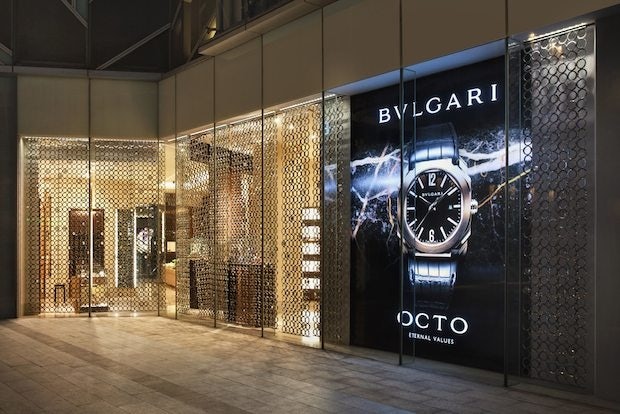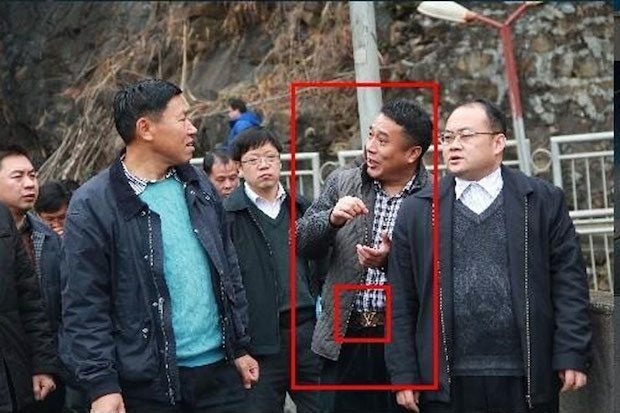
A Bulgari store in Shanghai. Luxury watches have seen a significant China sales slump since the start of China's anti-corruption campaign. (Shutterstock)
International luxury brands hoping for relief from the Chinese government’s anti-corruption campaign that began in 2012 shouldn't hold their breath, according to a new official announcement asserting that it’s still going strong.
Last week, the Communist Party’s Central Commission for Discipline (CCDI), the main office in charge of the campaign, announced that it would stretch at least through Chinese New Year in 2015 as it continues its “relentless punishment on officials' extravagance and bribery,” according to the state-run Global Times. This includes not only luxury gifts, but entertainment, trips to private clubs, and travel financed with public money or bribes.
In order to emphasize that the campaign is working, the CCDI and China’s state-run media are going all out this month to highlight success stories. In addition to its announcement, the CCDI publicized seven separate anti-graft cases, including one for a deputy head of local legislature in Central China's Hubei Province who used public funds to host a 48-person dinner. Meanwhile, Global Times also recently reported that ousted former Politburo member Bo Xilai’s luxurious Cannes villa has been put up for sale. Major officials are still being netted by the Communist Party, which announced in late December that it is investigating a former top aide of President Hu Jintao, Ling Jihua.
The CCDI is going high-tech as it publicizes its efforts—it also recently announced that it will be launching a mobile app on January 1 to deliver breaking news of its newest anti-corruption achievements against both “tigers” and “flies” (high-level and low level officials).
Thanks to corrupt officials’ tastes for the finer things in life, luxury companies have been in the spotlight in Chinese media in connection with the campaign. On Saturday, Chinese media reported that a local Hunan official was placed under investigation thanks to his conspicuous Louis Vuitton belt, while the Chongqing Youth Daily reported via an anonymous source that the campaign has caused 30 percent of outstanding orders on private jets to be canceled in China.

A Hunan official was placed under investigation for corruption thanks to this photo of his Louis Vuitton belt. (Xinhua)
All of this news is likely worrisome to luxury companies, which have seen a significant slowdown since the start of the anti-graft campaign. Bain & Company reported a negative 1 percent growth rate for the China luxury market in 2014, marking a third year of the industry’s slowdown after the market grew by 2.5 percent in 2013 and 7 percent in 2012 (a significant decline from 30 percent growth in 2011).
The crackdown hasn’t affected all sectors equally, however—luxury items associated with graft such as high-end spirits and watches have fared the worst, while “affordable luxury” brands geared toward China’s middle class have still seen significant growth.
Since the crackdown doesn't seem likely to end anytime soon, luxury companies are taking a variety of measures to cope. Some are taking a cue from the success of masstige labels such as Coach and Michael Kors by going more mid-range in order to tap into the growing spending power of China’s upper middle-class consumers. This is especially true for high-end hotels and restaurants hurting from a lack of fancy official banquets, as well as brands producing luxury versions of the Chinese spirit baijiu as sellers slash bottle prices.
It’s not just the anti-graft campaign causing the slowdown, however: as a growing number of Chinese shoppers head abroad (or just buy items from abroad online) to avoid high tariffs, growth from the China market is shifting overseas.For many major high-end clothing and accessories brands, that means their response to the slowdown actually involves upping their exclusivity on the mainland while targeting the Chinese travel market.
Even as the anti-graft campaign continues and growth remains slow, experts are still expressing faith that rising incomes for average Chinese consumers will lead to high luxury demand without corruption-related spending. Euromonitor predicts that China’s domestic luxury market is on track to become the second largest in the world by 2019. In order to keep up with China’s changing market, brands will have to ensure that they have a deep knowledge of the key characteristics of their Chinese customers so they aren’t left behind.